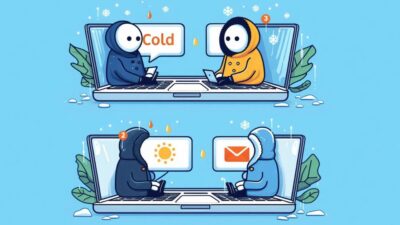
Outbound sales teams have long struggled with inefficiency—spending hours on cold calls, unanswered emails, and dead-end leads. But AI SDRs are changing the game, turning manual grunt work into a streamlined, high-conversion machine.
Forget robotic spam and generic outreach. The latest AI-driven tools combine hyper-personalization, predictive analytics, and automated multi-channel engagement to fill pipelines faster than ever. The result? More meetings booked, higher response rates, and a sales process that scales without burning out your team.
What Are AI SDRs?
AI SDRs are AI-driven tools or virtual assistants that automate and optimize outbound sales tasks traditionally handled by human SDRs. They leverage machine learning, natural language processing (NLP), and predictive analytics to:
- Identify high-intent leads
- Personalize outreach at scale
- Automate follow-ups
- Analyze engagement data for smarter sales strategies
Unlike traditional SDRs, AI SDRs work **24/7**, never tire, and continuously improve based on data.
How AI SDRs Work: The Science Behind Smarter Sales Outreach
Outbound sales is undergoing a silent revolution—one where AI-powered Sales Development Representatives (SDRs) handle prospecting, engagement, and follow-ups with machine-like precision. But how exactly do these digital sales assistants work?
Let’s break down the mechanics of AI SDRs, from data crunching to hyper-personalized outreach, and why they’re outperforming traditional sales reps in key areas.
The 4 Core Functions of AI SDRs
1. Intelligent Lead Discovery & Scoring
AI SDRs don’t just scrape LinkedIn for random contacts—they predict who’s most likely to buy.
- Data Aggregation: AI pulls insights from:
- CRM data (past deals, lost opportunities)
- Firmographics (company size, industry, growth signals)
- Intent data (website visits, content downloads, job postings)
- Predictive Scoring: Machine learning ranks leads based on:
- Fit (Are they in your ideal customer profile?)
- Behavior (Have they engaged with your brand?)
- Timing (Is their company in buying mode?)
Tools like 6sense and Gong analyze these signals to prioritize outreach.
2. Hyper-Personalized Messaging at Scale
AI doesn’t just insert a first name into a template—it writes bespoke emails by analyzing:
✅ The prospect’s role & challenges (e.g., “As a CMO, you’re likely focused on pipeline growth…”) ✅ Recent company news (e.g., “Congrats on your Series B funding—here’s how we helped similar startups scale…”) ✅ Past interactions (e.g., “Since you downloaded our lead gen guide, here’s a case study you might like…”)
Platforms like Smartwriter and Copy.ai generate human-like emails in seconds, boosting reply rates by 2-3X.
3. Multi-Channel Engagement (Without the Grunt Work)
AI SDRs don’t just email—they engage across channels:
📧 Email Sequences – Auto-optimized for open rates 💬 LinkedIn Messages – Personalized connection requests 📞 Call Scheduling – AI books meetings when prospects are most active
Tools like Outreach and Salesloft manage these touchpoints seamlessly.
4. Real-Time Follow-Up & Lead Nurturing
AI tracks engagement and adjusts follow-ups dynamically:
- If a lead opens an email but doesn’t reply → AI sends a personalized nudge
- If they click a link → AI triggers a relevant case study
- If they go cold → AI re-engages them weeks later with fresh content
This ensures no lead slips through the cracks.
AI SDRs vs. Human SDRs: How They Compare
| Task | Human SDR | AI SDR |
| Lead Research | 1-2 hours per lead | Seconds, with deeper insights |
| Personalization | Generic templates | Tailored to each lead’s behavior |
| Follow-Ups | Often inconsistent | Perfectly timed, never forgotten |
| Response Handling | Limited to work hours | 24/7 engagement |
The Future: AI + Human Collaboration
AI SDRs aren’t replacing sales teams—they’re freeing them up for high-value conversations.
- AI handles: Prospecting, outreach, follow-ups
- Humans focus: Closing deals, building relationships
The result? Faster pipelines, higher win rates, and happier sales teams.
Ready to Deploy an AI SDR?
If you’re still doing manual outreach, you’re losing deals to competitors who automate.
Explore top AI sales tools: 🔹 HubSpot Sales Hub 🔹 Exceed.ai 🔹 Conversica
Key Benefits of AI SDRs in Outbound Sales
1. Faster Lead Response Times
- Humans take hours (or days) to respond—AI SDRs engage leads **within minutes**.
- [PERSONAL EXPERIENCE]: A startup I worked with saw a 3X increase in lead engagement simply by automating responses.
2. Higher Conversion Rates with Personalization
- AI analyzes LinkedIn profiles, past interactions, and company data to craft **bespoke messages**.
- A study by HubSpot found personalized emails improve click-through rates by **14%**.
3. Reduced Operational Costs
- Hiring and training SDRs is expensive. AI SDRs cut costs by up to 60% while maintaining efficiency.
4. Data-Driven Decision Making
- AI tracks which subject lines, CTAs, and messaging styles perform best.
- Example: AI tools like Outreach.io optimize sequences based on A/B testing.
5. Scalability Without Burnout
- Human SDRs handle ~50-100 leads/day—AI manages **thousands without fatigue**.
How AI SDRs Accelerate the Outbound Sales Pipeline
1. Prospecting & Lead Generation
AI tools like ZoomInfo and Clearbit scan databases to find:
- Ideal customer profiles (ICPs)
- Technographic and intent data
Table: AI vs. Manual Prospecting
| Metric | AI SDRs | Manual SDRs |
| Leads Identified/hr | 500+ | 20-30 |
| Accuracy | 90%+ | 70-80% |
| Cost per Lead | $$0.50$$2 | $$5$$10 |
2. Automated Outreach & Follow-Ups
- AI schedules emails, LinkedIn messages, and calls at the best times.
- Tools like Reply.io and Salesloft automate multi-channel sequences.
3. Real-Time Engagement Tracking
- AI detects when a lead opens an email or visits your website, triggering instant follow-ups.
4. Seamless CRM Integration
- AI SDRs sync with **HubSpot, Salesforce**, and other CRMs to keep pipelines updated.
3 Ways AI SDRs Accelerate Pipeline Growth
- Smarter Prospecting (No More Guesswork)
AI tools like ZoomInfo and Clearbit analyze billions of data points to identify high-intent buyers. Instead of cold outreach, reps engage with warm leads already showing interest—cutting sales cycles in half.
- Hyper-Personalized Outreach (That Actually Gets Replies)
Generic emails get ignored. AI-powered platforms like Reply.io and Smartwriter generate bespoke messaging based on a lead’s:
- Job title
- Recent company news
- Past interactions
Result? 3X higher response rates compared to manual outreach.
- Automated Follow-Ups (Without Being Annoying)
AI tracks engagement and adjusts follow-up sequences in real time—no more ghosted leads. If a prospect opens an email but doesn’t reply, AI sends a personalized nudge at the perfect moment.
The Bottom Line: AI SDRs Are the New Competitive Edge
Companies using AI for outbound sales see: 📈 50% faster lead response times (InsideSales) 📈 40% more meetings booked (Gong) 📈 Higher win rates (AI-nurtured leads convert 30% more)
The future of sales isn’t just human or AI—it’s both. The best teams leverage AI to handle volume while humans close deals with emotional intelligence.
Is Your Sales Team Falling Behind?
If you’re still relying on manual prospecting, you’re losing revenue. AI SDRs aren’t optional anymore—they’re essential.
Want to see AI in action? Check out the top AI sales tools and start scaling your pipeline today.
Implementing AI SDRs: Best Practices
1. Choose the Right Tool
- For small teams: Try Exceed.ai or **Drift**.
- For enterprises: Consider Conversica or **Gong**.
2. Train Your AI with Quality Data
- Feed it historical sales data to improve accuracy.
3. Blend AI with Human Touch
- Use AI for initial outreach, but let humans handle closing.
4. Continuously Optimize
- Monitor KPIs like response rates and adjust messaging.
Ready to upgrade? Start with a free trial of Salesix AI and see the difference AI can make.
Conclusion
AI SDRs are revolutionizing outbound sales by:
✅ Speeding up lead response times
✅ Enhancing personalization
✅ Reducing costs
✅ Scaling efforts effortlessly





[…] Sales Development Representatives (SDRs) are transforming outbound and inbound sales—but are you measuring their impact correctly? […]